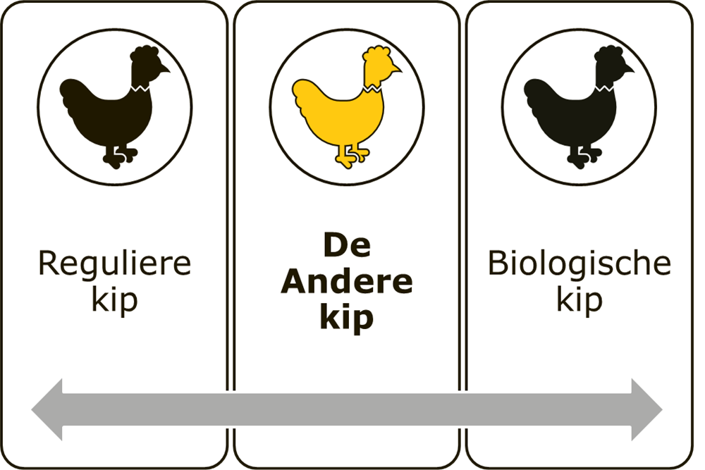Project news ILVO went looking for another type of chicken
Recently, the digital final report of the demonstration project 'The Other Chicken' was published. In this project, partners Inagro, ILVO, Proefbedrijf Pluimveehouderij, Landsbond Pluimvee and the University of Ghent searched for an alternative Flemish broiler. A central feature of this project was that the concepts were developed by the producers themselves and not imposed by retail. But when is a chicken a concept chicken and how much should the price difference with a regular meat chicken be to break even? The demonstration project 'The Other Chicken', funded by the European Fund for Rural Development, sought and found an answer.

Concept chickens are still often seen as synonymous with slow-growing meat chickens, but this is not true. After all, there are several conditions that can be imposed on concept chickens. For example, additional requirements can be imposed on the poultry farm itself (barn construction, barn equipment, type of chicken), but also on the supplying and processing industry (hatchery, catching team, feed, cleaning procedure, transport and slaughterhouse). In addition, a concept must also fit into our current society where sustainability is highly valued. Since sustainability consists of different aspects such as economy, ecology and animal welfare, a compromise has to be found between these parameters.
In the think tanks organized during the project in the presence of different stakeholders, two different concepts were conceived: a first concept with more focus on the environment (regular chicken with extras) and a second concept with more focus on animal welfare (slow-growing, tasty and welfare-related chicken). The technical and business feasibility of both concepts was investigated. For the environmental concept, a regular chicken (Ross 308) that was slaughtered after 42 days was chosen. The stocking density was lower than that of the current standard chicken (36 kg/m² instead of 42 kg/m²). For the welfare concept, a slower growing breed (Hubbard 757) was chosen, also kept at 36 kg/m² and slaughtered at an age of 56 days. Enrichment material was provided for both concepts.The results of the trials at ILVO and the Pilot Farm for Poultry Production (Proefbedrijf Pluimvee) were similar. As expected, the chickens of the environmental concept grew faster, consumed less feed in total and had a better feed conversion. They had the best slaughter yield and the highest percentage of breast fillet, but they scored significantly worse for litter quality and foot pad lesions compared to the welfare concept.
ILVO also conducted a taste test in which pieces of breast fillet from the welfare concept were compared with pieces of breast fillet from a regular chicken. A difference could effectively be detected between the breast fillet pieces, although no clear preference could be established during this test. However, the breast fillet of the regular chicken was considered significantly more tender and juicy than the breast fillet of the welfare concept.
Of great importance for potential starters of concept chickens is the financial feasibility. The Pilot Farm for Poultry Production carried out a business economics analysis to this end. It concluded that for the welfare concept almost 35% more must be paid than for a current standard chicken. With a winter garden added, the price rises a little further. For the environmental concept, an additional price of almost 2% has to be paid compared to the current standard chicken. These figures are based on the performance of 1 round where different assumptions were made about feed and meat prices among others. However, these factors can strongly influence the final result.
Want to know more about this demonstration project? Then read the digital final report (in Dutch).



